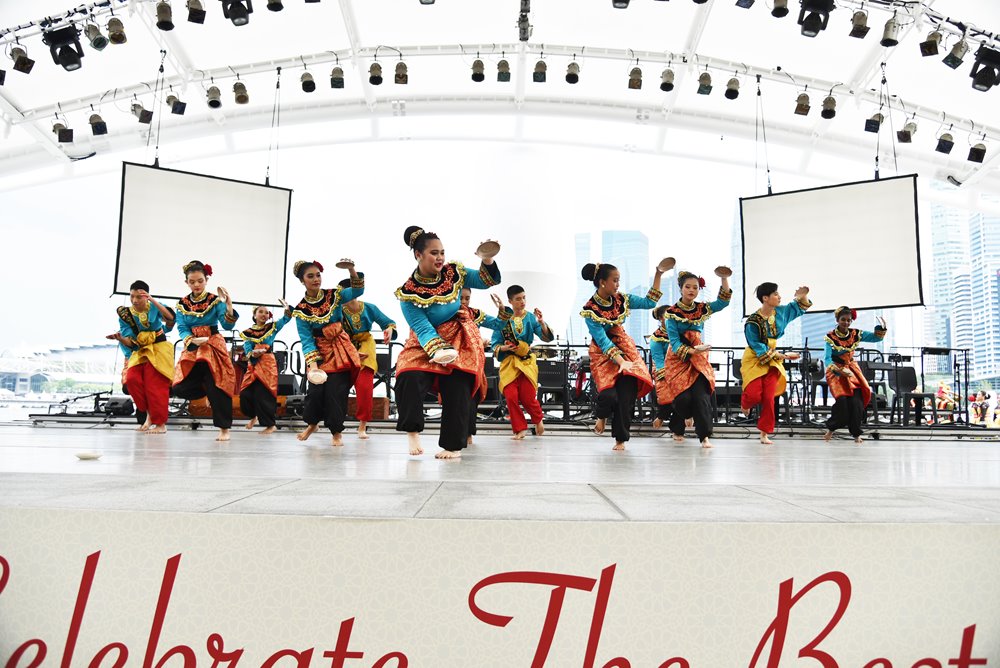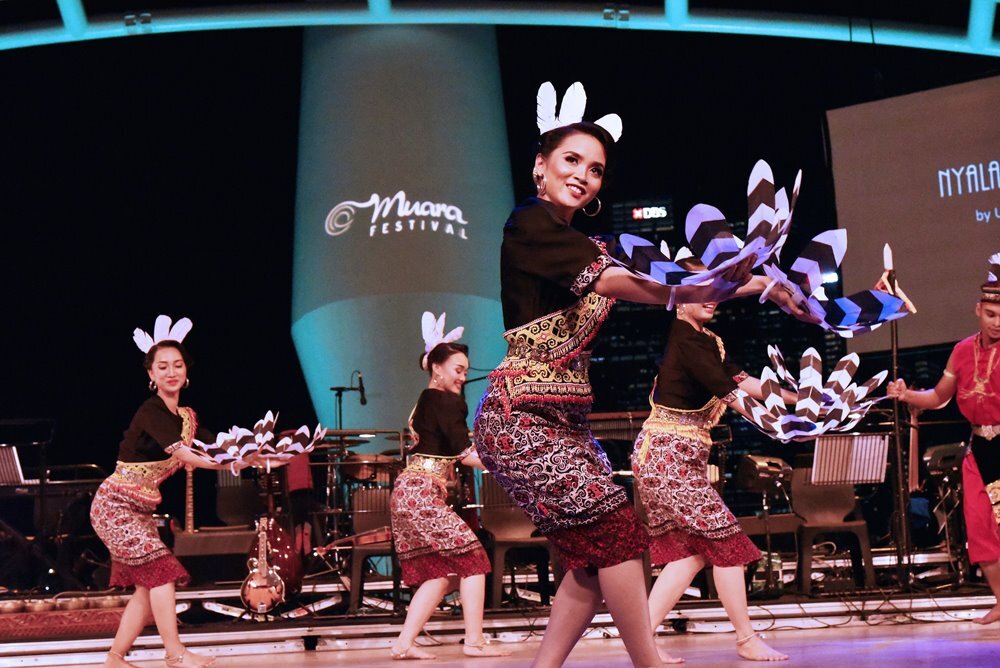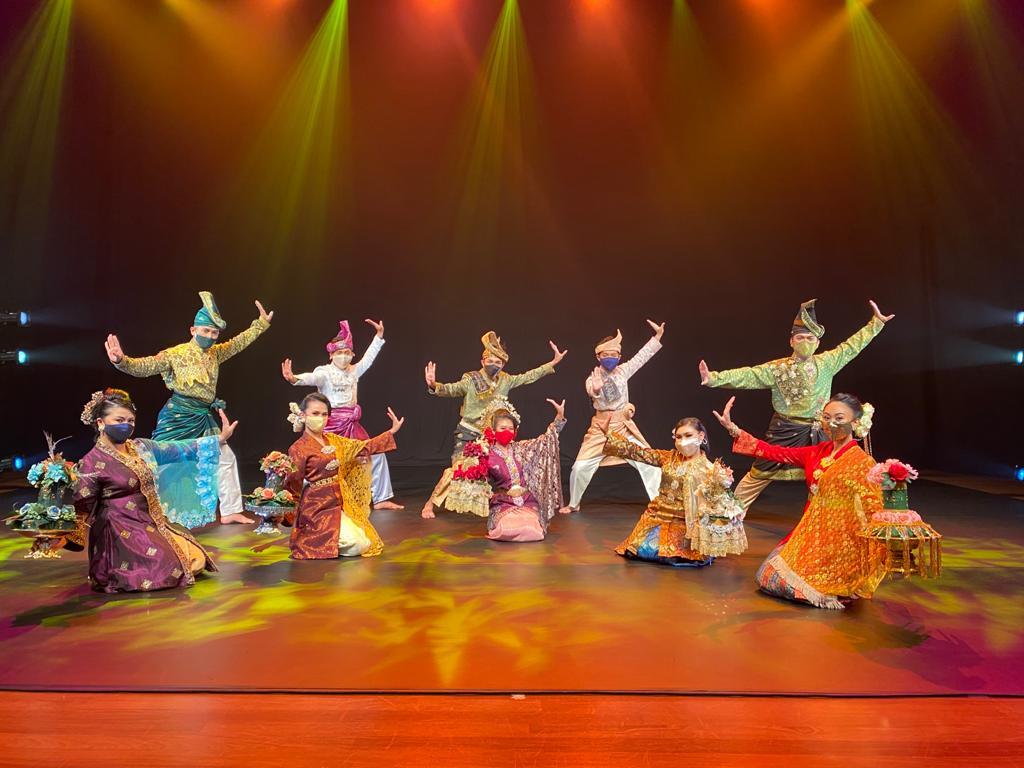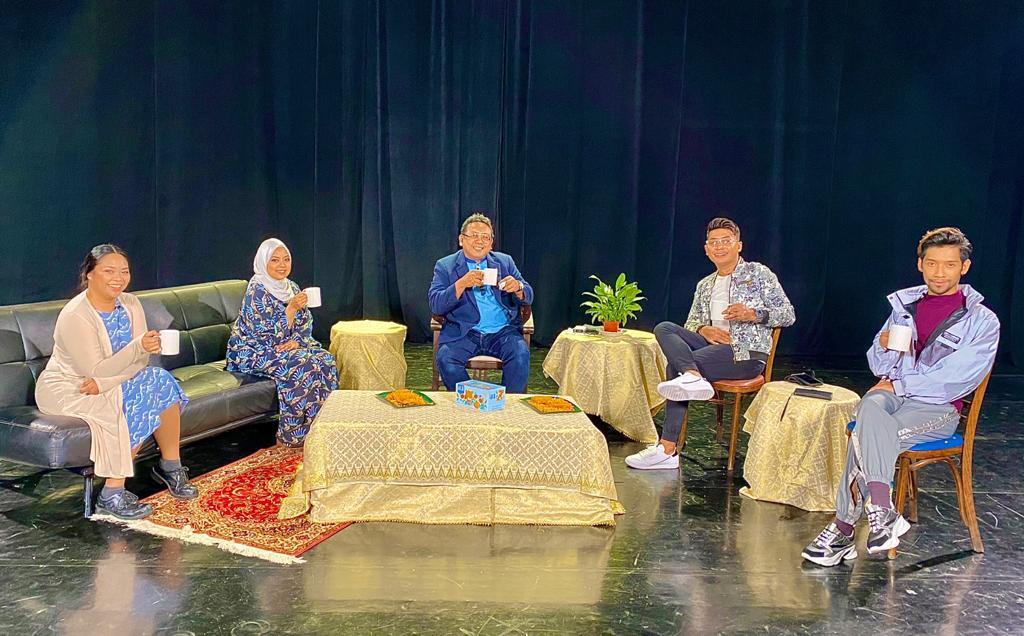Dancing with Traditions
28 Jul 2021Zairin Abdul Latiff’s students show up each week for Malay dance practice, without fail.
“They remind me of my younger self,” chuckled Zairin, one of the lead choreographers with Era Dance Theatre (EDT) and a winning coach whose students have gone on to clinch Distinction Awards (the highest honour), at the Singapore Youth Festival for nearly 20 years.

With Zairin's choreography and guidance, students from Anderson Secondary School take the stage at Muara Festival 2018. (Photo: Era Dance Theatre)
Young Roots
Zairin’s interest in Malay dance started when he was 9. His passion grew in secondary school, when he began to develop his craft under the mentorship of award-winning dancer-choreographer, Osman Abdul Hamid. In 2004, when the time came for Zairin to work, he chose a career in professional dance, despite his parents’ appeal for a more conventional and stable role.
Today, while he remains at heart a dancer, he is also a choreographer with Era Dance Theatre (EDT). Co-founded by Osman, who continues to lead as EDT’s Artistic Director, the organisation promotes and develops Malay arts and culture in Singapore.
EDT is also one of three traditional arts groups supported by Temasek Foundation to promote Singapore’s traditional arts culture and pass on these art forms and customs to the next generation. The other two groups are Apsaras Arts Ltd, a locally grown Indian classical dance group, as well as the Chinese Opera Society (Singapore).
For Zairin, not only is he reaching out to younger audiences for Malay dance, he is also actively developing young talent in this cultural art form. “I want my students to know that we can go beyond traditional Malay dance, like Zapin (a dance and musical form in traditional Malay performing arts), but still be rooted in culture,” said Zairin. To demonstrate to his students, he shares video clips of contemporary dances rooted in traditional movements, including performances staged by Era Dance Theatre.
With the support, EDT continues to stage programmes that nurture an appreciation in traditional Malay dance. The Muara Festival is one of the avenues to showcase their art form, and one of the region’s key dance festivals.
Celebration of the Region
Muara, or the river mouth in Malay, represents the point where rivers converge with each other, with lakes and seas that are bigger than they are. Similarly, EDT launched the Muara Festival in 2010 to bring together Malay dance troupes in Singapore, and foster the exchange and confluence of ideas and practices with dancers from Malaysia and Indonesia.
Before the pandemic, EDT staged live performances with more than 600 dancers and musicians, connecting over 10,000 festival attendees to the traditional art form each year. “They get to see different cultures and styles from Malaysia and Indonesia. But all of them are rooted in Malay dance,” Zairin, who choreographs performances for the festival, reflected. “There’s so much variety in terms of colours and genres. It really is a celebration of the region.”

With Zairin's choreography and guidance, students from Anderson Secondary School take the stage at Muara Festival 2018. (Photo: Era Dance Theatre)
“Most of my students who are more serious about Malay dance join Era Dance Theatre after they complete major exams like ‘O’ Levels. Thanks to their teachers, younger students who take Malay Dance as a CCA get to watch some of the performances we stage, including those at Muara Festival.
“When they watch other students like them perform with costumes and live music, and get to see the possibility of dance beyond their school studios, it really makes a difference. They’re a lot more motivated to keep dancing.”
For Zairin, that’s what it’s really about. When his students’ families express the same concerns about dancing for a career, as Zairin’s family once did, he reminds them that simply finding a way to keep dancing is enough.
“Dance on the side, while you have a full-time job. Dance as a pastime, a hobby. There are other ways to keep your passion without becoming a professional dancer.”
Tradition at a Time Like This
In 2020, COVID-19 almost halted the dances, but it didn’t.
“We felt strongly that it was important to keep up the annual ritual of the Muara Festival that our community has grown to look forward to,” recalled Zairin. As such, EDT shifted their festival online; they recorded performances by Singapore-based dancers in the Esplanade recital studios when it was safe to do so, and made the recordings free for the community to view.

Adapting tradition for a digital audience, four dance groups from Singapore (Azpirasi, Era Dance Theatre, Perkumpulan Seni and Sriwana) record Semarak Muara, the opening dance for Muara Festival 2020, with masks and safe management measures. (Photo: Era Dance Theatre)
While Zairin agrees that safety comes first, not being able to see the facial expressions of the masked dancers, not being able to move to live music and not being able to respond to a live audience had made him miss the connections and camaraderie that drove the Festival.
Yet, the digital experience was also an opportunity for EDT to bring their art form to new audiences from countries like Japan, Thailand, Malaysia and Indonesia, who could now catch the performances without travelling to Singapore.
Rain or shine, live or digital, the Muara Festival continues to etch a space for traditional art in the community, whether it’s experiencing the art form through performances, or guiding students to grow their practice, or giving people a reason to dedicate time to keep dancing.

At conversation series Kopi O Pisang Goreng, Zairin Abdul Latiff (second from right) and other choreographers from the Malay dance scene examine the impact of COVID-19 on learning the traditional art form over digital media. (Photo: Era Dance Theatre)
And these beliefs aren’t just for the young. The Pak Pak Penglipur is a new dance performance by EDT that features eight local pioneers. “Even though nearly half of them haven’t danced for more than 10 years, they came down together for the event,” Zairin shared. “They wanted to show the youths today, and the general public, that older people like them can also carry on the culture of dance even in their silver years. Because if there’s passion in you, nothing is impossible.”
That’s how Malay dance, and other traditional art forms, can continue to take root so that the baton continues to be passed from generation to generation.
Temasek Foundation supports organisations like Era Dance Theatre through the Sustain the Arts (stART) Fund. Administered by the National Arts Council (NAC), the joint initiative aims to boost the long-term sustainability of small arts organisations so that they may continue to present quality programmes and bring people together.